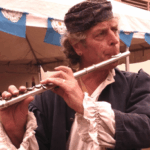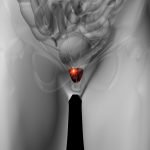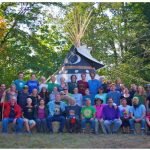Naturopathic Practice: The Model I Hold Dear
Reverend Steven A. Bailey, ND
In 1977 I was living a vegetarian lifestyle, juice and water fasting, doing yoga, meditation, herbal studies, massage, and reflexology. Okay, people occasionally called me a hippie. When I learned of the naturopathic college in my home town of Portland, Oregon, I felt my stars collide and a need to race to catch up with all that the college had to offer. Doctorate degrees at the Northwest College of Naturopathic Medicine were affordable, endorsing individual-centered healthcare options consistent with my own philosophies and practices.
When I joined 78 other new students at NCNM in 1979, I had relevant education and experience. In becoming Dr Bailey, I found the center of my life as environmentalist, student of religions and philosophy, the fasting guy, and social activist, which is the dominant gene in my family. I saw naturopathic medicine as a way to serve my local and world family, consistent with what I held true. I was inspired by some professors and guest faculty, was challenged by some, and tolerated others.
As I share how I see my role as doctor and advocate for my patients, please understand that this is what works for me. I am no shining example of anything; my childhood is on par with everyone’s and I consider myself on a bumpy path to wholeness. I have sat on many boards, taught at colleges and CE events, wrote over 200 weekly and monthly articles in the 1980s, hosted 22 years of public radio on naturopathic medicine, have taken over 500 students in the preceptoring programs, have published 3 books, and served as speaker of the AANP. It is only in summary that this becomes impressive; for me, these were merely choices in living and contributing to my community. Not counting the books, these activities represent about 30 000 hours of non-paid activities for the profession, for which I have been richly compensated. This is not uncommon among the graduates of my era. I have worked to honor my elders’ work, to strengthen the profession in philosophy, paradigm, and practice that continues to serve both the individual needs of our patients and the evolving global healthcare system.
Inspiration From My Elders
I am grateful that my education included lectures and relationships with John Bastyr, Joe Boucher, Ralph Weiss, Bill Turska, William Babnick, and other pioneers. These naturopathic doctors were inspirational in their dedication, wisdom, patient outcome, case studies, and most importantly, their nature, or continence.1 The portrayal of their healing art provided me confidence in entering my solo practice. I was prepared for primary care, with nature-cure as my focus.
A clear perception I had of my elders, as I entered into active practice, was of qualitative good. Politically and socially diverse, these men and women shared a love for the trade. Naturopathy was no gateway to fortune or fame, and those that took this road exemplified the humble servant more than the prestigious doctor. The soft compassion of John Bastyr, Joe Boucher, and Ralph Weiss (and so many others) was backed by courage and presence when needed. There was acceptance and inclusion offered to the students at NCNM and John Bastyr College.
I left NCNM feeling confident that I possessed the knowledge, skills, and philosophy to serve as a naturopathic doctor. I would serve on the NCNM board through 1991, witnessing the creation of student loans, the creation of the CNME, and therefore national candidacy and accreditation for NCNM and the creation of the AANP.
Pillars of Naturopathic Care
In naturopathic medicine, we lost our long relationship, our familiarity, when our one college, National College of Naturopathic Medicine, produced just a handful of naturopathic doctors from 1956 to 1959, and only 19 graduates between 1960 and 1970! My colleagues, the “Welders,”2 who graduated between 1975 and 1985, likely represent the only doctors receiving, with their own ears, the stories from the mouths of those we revere as our true elders. The model I hold dear, my original view of naturopathic medicine, comes from the philosophies, practices, and oral traditions of these elder gentlemen and gentlewomen.
History will show that the Welders drove naturopathic medicine into the public consciousness and paved the way for the successes and conflicts that embody us today. The Welders spent the late 1980s working within the newly formed AANP, codifying the naturopathic principles that stand to define our unique profession alongside other national models. The principles come from our teachers who gathered knowledge and wisdom from their teachers, their own practice, and many traditions. Each of these 6 principles, tried and tested, have become the pillars for our naturopathic care of our patients:
- The healing power of nature (vis medicatrix naturae)
- Identify and treat the cause (tolle causam)
- First do no harm (primum non nocere)
- Treat the whole person (in perturbato animo sicut corpore sanitas esse non protest)
- The physician as teacher (docere)
- Prevention (principiis obsta: sero medicina curator)
These Latin phrases, when embodied in practice, provide continuity of care for both doctor and patient. “Nature-cure” can be a restrictive phrase, depending on personal perspective and definition. Nature-cure as “naturopathy” acknowledges herbal, homeopathic, nutritional, spiritual, physical, eastern and multi-national traditions as being consistent within the scope and practice of the profession.
Today’s graduates, with emphasis on standards of practice, diagnostic assessments of conventional medicine, leanings towards evidenced-based paradigms and debt formerly known only to “medical school” doctors, do not have the opportunity to experience the living nature-cure of the elders. Still, we must continue to adapt to, and not adopt, the conventional paradigm. What makes naturopathy relevant, why we have a distinct educational system, is our identity, our philosophy, and what proves to be both a complementary and a primary field of public health.
I left NCNM, embracing the privilege of becoming a naturopathic doctor. Consistent with Portland, Seattle, and Vancouver naturopathic practices, I entered a field of primary care. My practice has included home births, prenatal care, AIDS, cancer, heart disease, workers’ comp and auto injuries, and acute and chronic diseases of all kinds. All of these patients were approached with my elders’ philosophy of treating the person and there were no “standards of care” within this model. Much of what we think of today as standards of care or practice were simply given standards within the broader context of full naturopathic care.3 My personal model of care merges who I am, what I believe, what I have learned in life and lesson, and everything unfolding in research and thought, to strengthen the care of my patients. I can offer thoughts and approaches to naturopathic practice, but in the end each philosophy, each practice and truth, is the work of being a doctor as we travel our own road to becoming an Elder.
The Importance of Wholeness in Our Profession
Many speak of a divide within our professional family tree. The view, from opposite ends of 2 generations of doctors, fails at times to reveal family resemblance. Still, we are family rooted to our philosophy and able to sustain many branches. There is no view that contradicts the truth that will not eventually fail; the truth always remains. We must not hold to old views that fail to sustain their truth, just as we must be open to the possibility of new knowledge. I know that wholeness of the profession is possible as I meet soon-to-be doctors as preceptors in my office, enthusiastic and anxious to apply their education. Our “branches” are not opposing, and each can flourish within the naturopathic medicine of today while holding to the principles that stand as our truth.
The divide we are experiencing does not grow from our root philosophy and practice. Epigenetics has been consistently addressed in our tradition. Most practitioners dispense probiotics to provide balance and harmony within the digestive system; the proof and benefit are proven. The limitations of “evidence-based” scientific paradigms are often counter-intuitive to the outcomes of traditional naturopathic medicine. The evidence-based approach cannot avoid the creations of limitation within standards of practice. Like our elders, we must keep abreast of research, practice enhancements, laboratory refinements, and, as appropriate, integrate them for our patients’ benefit. With understanding of the original intent of naturopathic philosophy, nature-cure, and principles, “primary care through nature-cure” need not be a bombastic contradiction, but an interesting and vital consideration.
Humility, service to our patients, compassion, passion for continued learning, personal gratitude and continence, and respect and tolerance for others’ individual views and beliefs are some of the embodiments that, as doctors, can keep our tree from splitting. These qualities helped our elders, and their many distant members work in balance for the good of the profession.
The Foundations Project exists as a 3-volume text (soon to be in print) that documents the contributions of all doctors, beginning with our true elders; hundreds of people have worked for over 10 years to bring comprehensive understanding to our view and practice. This will greatly serve the present and future.
Our elders would be at the forefront of current science and would easily incorporate the new evidence of diagnosis and treatment but with a clear view that held to the truths of time and not the tides of man. We may wonder how the many faces of our practice share a family tree, but to me it is obvious. The more things change, the more our tools and practice must adapt, but the truth of the complex natures of man and woman will remain elusive as integrating the body, mind and spirit continues to be the individual challenge of practice within our work. Our principles are strong, our education is clearly meeting the standards of the Department of Education, and our graduates remain a vital piece of the evolution of our healthcare system. An ounce of prevention, food as medicine, minimal force, pursuit of true wellness – these are the foundations of our healing work.
The Art of Medicine
I want my patients to be greeted into a safe and welcoming environment. My dear friend, elder pioneer and mentor, Ralph,4 suggests daily prayers of “send me only people I may help” and recommends that all medical equipment receive prayers of safe and effective intention. Clearing energies is ceremonial and balancing in both doctor’s and patient’s environments. We must be attentive, focused and present with our encounters and whether we find this embodiment through meditation, energetic practices, prayer of just personal discipline, these qualities define how I attempt to practice; the tools, medicinary, techniques and approach to naturopathic care are equally individual to each practitioner. Our greatest strengths should come from our own evidence of positive outcome; hence, the “art of medicine” is a dynamic process in our profession and can only minimally be defined within standards of care or practice.
I maintained these views and hopes upon graduation and while the student loan debt of today drives a faster insurance-driven model of practice, naturopathic medicine is still quite affordable both in prevention and alternative treatment approaches, as compared to conventional medicine. Our graduates are still seeking to treat the whole person. If our individual philosophies allow us to respect and honor our patients’ views and needs, embody doctor as teacher, seek causative origins of distress and disease, and understand our own strengths and limitations (do no harm), naturopathic medicine can stand strong, supporting both the nature-curist and the evidence-based practitioners of disease treatment protocols. While our future remains unspoken, many choices are yet to unfold. The question beckons: “Will our differences of opinions and philosophy outweigh our shared purpose and principles?” I hold possibility that we may move forward, adapting and thriving within the necessities of our complex medical system, growing as one strong family tree.
Interview with Steven Bailey, ND
How long have you been practicing naturopathic medicine and what changes have you seen?
Dr Bailey: I have been in full time private practice for 31 years. Changes are many… huge change in public awareness of naturopathic medicine… much more is still needed, but we were nearly invisible outside of our patient families when I started. Profoundly more integration with other medical participants; this was once mostly with chiropractors and massage therapists, then with acupuncturists. And a reduction of the once-minor relationship with the osteopaths… now the integrative medical model is starting… Change within the profession from a more traditional nature-cure paradigm to a paradigm that looks more empirically and is more beholden to “evidence-based” foundations as defined by the orthodox method of thinking.
Naturopathic medicine has had a long lineage of elders passing along the medicine to future generations. Whom do you count among those who influenced you?
Dr Bailey: So many, and I know I will not remember to mention them all today. The first naturopathic doctor I met was William Babnick, the grand home-birth teacher of so many. William Turska and William Mitchell (though a Welder, not an elder) would be added as wise teachers and friends that same year. I had a wonderful learning and friendship with Joseph Boucher starting at this time, and 5 years together on the NCNM board. Ravinder Sahni (“I practiced homeopathy before it became a religion”) and I spent 10 years together on the board, and I am grateful to him as well for his wise teachings. Teachings and friendship with Dr Bastyr, and, of course, my past 10 years with my greatest influence, Ralph Weiss (“The Reluctant Healer”). Don Walker deserves credit as a Welder, who gave so many of us in the Northwest an understanding and power within the political and legislative arenas, that sadly is a never-ending aspect of being a naturopathic doctor.
What has the most effective therapeutic modality been for you throughout your career and why?
Dr Bailey: Fasting programs of all natures, primarily juice programs and living foods, because it has been the most reliable and safe method of restoring health, promoting wellness, and reversing disease.
When you view the profession as it now stands, what are your concerns regarding naturopathic medicine, if any?
Dr Bailey: My concerns are many, but the single most evident concern is what I feel is a move from the wisdom of our elders – the truths of the early paradigm and approach to natural medicine – to both educational and political appeasement of orthodox standards into our core philosophy and education. This direction has placed significant financial constraints upon new graduates’ ability to establish a patient-focused practice. Many of our teachings have been lost as the curriculum and associated accreditation follow the design of the Flexner Report’s early destruction of schools of the healing arts. Even with financial capabilities to spend the time needed to fully know our patients and their health status, I fear that our graduates are not being given the tools to actually practice naturopathic medicine as I was taught and as my elders practiced.
What were the challenges you faced when you first entered practice?
Dr Bailey: Elaine Bayes Gillespie and I were the only 2 naturopathic doctors in all of northwest Portland – an area totally co-opted by Good Samaritan Hospital and the longstanding, conservative medical establishment at its side. Little community, little viability, and few patients for the first 2 years.
Naturopathic Medicine Today
What challenges do you see for newer physicians entering the profession today?
Dr Bailey: High debt, less distinction between their care and other models of care.
There is a trend toward evidence-based medicine and managed care in order to lower medical costs. What is your view of this and how do you see naturopathic medicine in light of these trends?
Dr Bailey: Said once, “there are liars, damn liars, and then statistics.” Evidenced-based medical models pose a huge threat to the integrity of our medicine. The ever-redefining of standards of science, and the lack of fair economic support for natural and naturopathic modalities, will lead to an ever-thinner base of “evidence-based” justification for those therapies that are rationally justified by the patient outcome. Research models are not yet, in my opinion, able to assess multifactorial approaches that center on treating the patient. Managed care is, by definition, treating the disease. We must continue to treat the patient.
How do you define “nature-cure,” and how is it incorporated into your practice?
Dr Bailey: I define nature-cure as the outcome of a doctor’s ability to fully understand the patient, the conditions to be addressed, the cause of the condition, and the outcome from therapeutic intervention. Then, the nature curist will educate the patient as to this understanding – what is preventing the restoration of health, and what treatments within the natural world of medicine – therapeutic foods, life practices, (exercise, breathing, meditation, spiritual practice, and many others) and the assortment of therapeutics – are consistent with our roots (fasting, hydrotherapy, physiotherapy, counseling, and education).
There is a trend toward integrative medicine, ie, allopaths and naturopaths working together in the same clinic. What, in your opinion, would be needed to make this model work?
Dr Bailey: Parity and respect.
What has been the most rewarding part of your practice?
Dr Bailey: Patient outcome, especially with my daughter in her first year of life.
Advice for Fellow Naturopaths
What do you think that the naturopathic profession should strive for in the future?
Dr Bailey: Profound revisiting and rethinking of our educational model and how to reestablish true nature-cure and naturopathic medicine into an accreditation process that leads us into required but much less relevant focus of study. Has to be a better way!
If you could give any advice to the newer generation of naturopaths, what would it be?
Dr Bailey: Find humility and grace, but learn and hold on to the true magnificence of our naturopathic ways. Be patient; if you stay true to your values and the heart of the professional philosophy and practice, everything will be just fine.
 Steven Bailey, ND received his doctorate in naturopathy from NCNM in Portland, OR. In 1984 he founded the Northwest Naturopathic Clinic in Portland, where he continues to treat patients through nutrition, physiotherapy, and other tools of natural healing. Over the years he has worked to support and protect the practice of naturopathy by serving as speaker of the House of Delegates for the AANP. In recognition of this service, he was given the AANP’s prestigious Vis Award. Dr Bailey served 10 years as board member of NCNM, and served 2 years as the legislative chair of the OANP. He is co-lead author of the upcoming chapter on naturopathic history for the Foundations Project and also co-lead author of the Time Line Project. Nationally recognized as an authority on juicing and therapeutic juice fasts, Dr Bailey is a frequent lecturer in public forums, on cable television and radio, and in classrooms and community education settings. In addition to writing more than 150 articles on natural health, he is the author of The Reluctant Healer, The Fasting Diet, and the coauthor of Juice Alive.
Steven Bailey, ND received his doctorate in naturopathy from NCNM in Portland, OR. In 1984 he founded the Northwest Naturopathic Clinic in Portland, where he continues to treat patients through nutrition, physiotherapy, and other tools of natural healing. Over the years he has worked to support and protect the practice of naturopathy by serving as speaker of the House of Delegates for the AANP. In recognition of this service, he was given the AANP’s prestigious Vis Award. Dr Bailey served 10 years as board member of NCNM, and served 2 years as the legislative chair of the OANP. He is co-lead author of the upcoming chapter on naturopathic history for the Foundations Project and also co-lead author of the Time Line Project. Nationally recognized as an authority on juicing and therapeutic juice fasts, Dr Bailey is a frequent lecturer in public forums, on cable television and radio, and in classrooms and community education settings. In addition to writing more than 150 articles on natural health, he is the author of The Reluctant Healer, The Fasting Diet, and the coauthor of Juice Alive.
Glossary
- Elder/Pioneer: Those naturopathic doctors graduating before 1960
- Welders: Graduates of NCNM and JBC up to 1985
- Elders: Welders and other graduates with at least 15 years of active practice
- CNME: Council on Naturopathic Medical Education
Footnotes
- I have to admit that some of my elders were foul-mouthed and truly irascible, but those that shined, like our living legend, Betty Rattlett, inspired much admiration.
- “Welder” was a term coined for the students and teachers representing the profession from the 1950s to the mid-1980s. Without their presence and determination, the college may have ceased to exist. The Welders bridge the early creators of the profession to the evolving world of natural medicine.
- The educational move toward “standards or care” (or practice) faces not only a gestalt of disassociation from the whole, but removes the long-held reverence for the person and not the invading condition – the box of conventional medicine. Editorial comment: Two hundred years after Paracelsus and others dispelled the humors, conventional medicine gave up the leaches and purges. The humors may well still be present in the numerical ascriptions to alien “diseases.” Naturopathic medicine, neo-Platonic roots, that connect Pythagoras, Hippocrates, Dioscorides, Paracelsus, and Kneipp to our own tree, recognize the whole person, the body, the mind, the emotions, and the spirit.
- Dr Ralph Weiss is my co-author of his own story of our profession and his life called “The Reluctant Healer” (Square One Publishing, 2013). See his philosophies of practice, including the “three R’s” and other pearls.







